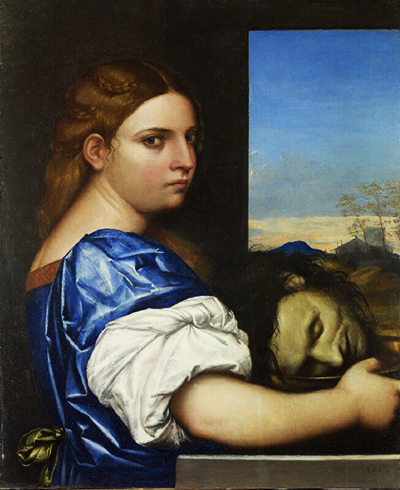Salome captures the early influence of the Venetian School which dominated the early teachings of Sebastiano del Piombo
Salome features on multiple occasions within the New Testament and has provided plenty of artists from the Renaissance with inspiration for their work. Christianity provided a basis for most work during this period, long before landscape paintings and other genres would also become popular.
Sebastiano's use of colour in these early days had been influenced by Titian and a young Giorgione, the latter in a more direct capacity. Vivid colour schemes, compared to papal states' other art schools, was very much their signature and remained consistent in Sebastiano's work up until he left for Rome.
The artist completed this work in 1510 and there are even signs within this piece of his affection for Venetian sculpture (see Tullio Lombardo, for example). There is a painting in Washington that fits a similar composition to this one, suggesting the two may have been part of a series. With little documentation available on Salome, it is hard to conclude with any great certainty.
The content found here is either Judith with the Head of Holofernes or Salome with the Head of John the Baptist. Judith was found frequently during this period of the Renaissance, particularly within the Venetian School. Without the actual decapitation featured, most presume it is more likely to be a portrait of Salome.
The Venetian School itself gifted the art world some exceptional artists, way beyond just those mentioned as contributors to Sebastiano's career. For example, paintings and sculptures of note also came from the likes of Giovanni Bellini, Lorenzo Lotto, Correggio and Tintoretto.




